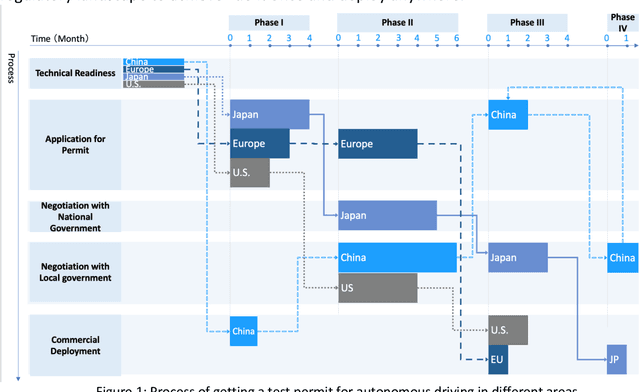Weiyue Wu
A Comprehensive Review and Systematic Analysis of Artificial Intelligence Regulation Policies
Jul 23, 2023Abstract:Due to the cultural and governance differences of countries around the world, there currently exists a wide spectrum of AI regulation policy proposals that have created a chaos in the global AI regulatory space. Properly regulating AI technologies is extremely challenging, as it requires a delicate balance between legal restrictions and technological developments. In this article, we first present a comprehensive review of AI regulation proposals from different geographical locations and cultural backgrounds. Then, drawing from historical lessons, we develop a framework to facilitate a thorough analysis of AI regulation proposals. Finally, we perform a systematic analysis of these AI regulation proposals to understand how each proposal may fail. This study, containing historical lessons and analysis methods, aims to help governing bodies untangling the AI regulatory chaos through a divide-and-conquer manner.
Compliance Costs of AI Technology Commercialization: A Field Deployment Perspective
Jan 31, 2023Abstract:While Artificial Intelligence (AI) technologies are progressing fast, compliance costs have become a huge financial burden for AI startups, which are already constrained on research & development budgets. This situation creates a compliance trap, as many AI startups are not financially prepared to cope with a broad spectrum of regulatory requirements. Particularly, the complex and varying regulatory processes across the globe subtly give advantages to well-established and resourceful technology firms over resource-constrained AI startups [1]. The continuation of this trend may phase out the majority of AI startups and lead to giant technology firms' monopolies of AI technologies. To demonstrate the reality of the compliance trap, from a field deployment perspective, we delve into the details of compliance costs of AI commercial operations.
Dilemma of the Artificial Intelligence Regulatory Landscape
Dec 17, 2021
Abstract:As a startup company in the autonomous driving space, we have undergone four years of painful experiences dealing with a broad spectrum of regulatory requirements. Compared to the software industry norm, which spends 13% of their overall budget on compliances, we were forced to spend 42% of our budget on compliances. Our situation is not alone and, in a way, reflects the dilemma of the artificial intelligence (AI) regulatory landscape. The root cause is the lack of AI expertise in the legislative and executive branches, leading to a lack of standardization for the industry to follow. In this article, we share our first-hand experiences and advocate for the establishment of an FDA-like agency to regulate AI properly.
 Add to Chrome
Add to Chrome Add to Firefox
Add to Firefox Add to Edge
Add to Edge